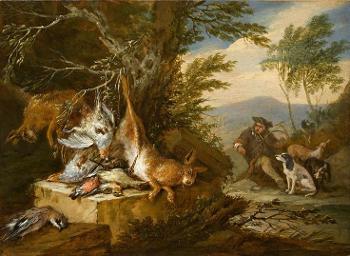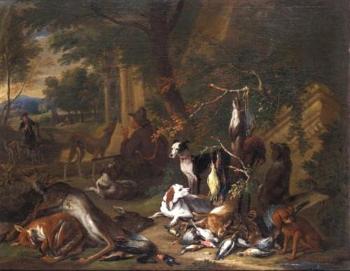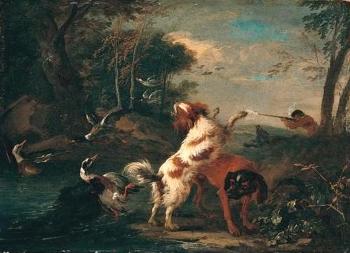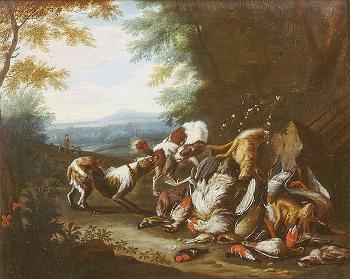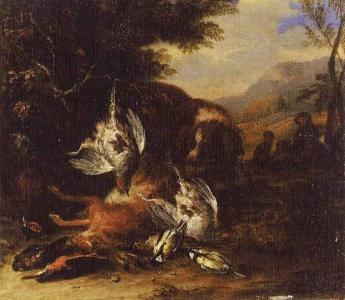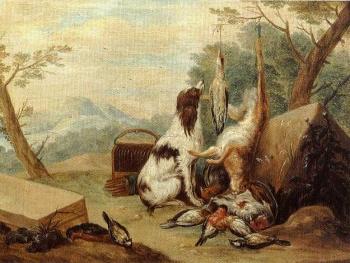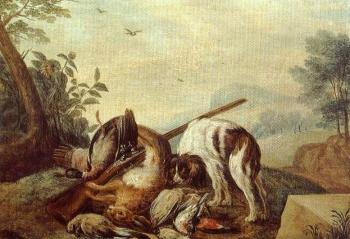5.300 €
A hunter with his two dogs resting near the spoils of hunt
Oil on canvas : 34,2 X 42,6 cm
Faded signature bottom middle “AGr.ijef.f”
(the A and G are intertwined; the “f” stands for “fecit” = “made” in latin)
Frame : 47,7 X 56,1 cm
I am currently documenting this painting
In short
Our Adriaen de Gryef was the son of an important Dutch still life painter, Jacques de Claeuw. “Gryef” refers to “griffe” in French, which is the translation of the Dutch word “claeuw”: claw.
In his turn de Gryef became a prolific, popular painter of mostly relatively small hunting scenes: hunters and/or their dogs at rest near the spoils of hunt. Although he was born in Leiden in Holland, he did spent the largest part of his career in Flanders.
About Adriaen de Gryef
Dutch-Flemish painter
Leiden (Holland), 1657 – 1715 or in/after 1722, Brussels
His last name is sometimes spelt Gryeff.
Son and pupil of the famous Dutch still life painter Jacques de Claeuw, called "Grief". “Claeuw” in Dutch and “griffe” in French both mean “claw”.
Painter of hunting still lifes : the early ones resemble those of Jan Fyt (Antwerp 1611 – 1661 Antwerp), the later ones those of Pieter Gysels. Occasionally he also painted fruit still lifes and barn scenes.
When Adriaen was about 10 years old the family moved within the Dutch Republic to Zeeland.
Recorded in 1687 as a painter joining the Guild of Saint Luke in Ghent, Flanders.
Left Ghent soon for Antwerp, where he married a wealthy woman in 1689.
Active in Brussels in 1690.
In 1694 first active in Antwerp, then in his native Leiden, so back in the Dutch Republic.
Left again for Antwerp, was there already in 1698 and joined the Guild in 1699/1700.
A few years later he reportedly moved to Brussels, where he is thought to have spent the rest of his life.
According to Jan De Maere (1994, p. 188) Adriaen de Gryef died in 1715.
According to Adriaan van der Willigen and Fred Meijer (2003, p. 96) he must have died in or after 1722. They base this on a painting in the Musée des Beaux-Arts in Tournai which is dated 1622: they think it could be typical of his latter-day production in Brussels although the size is exceptional and the subject somewhat unusual (a mix of dead and live birds).
Paintings by de Gryef can be found in numerous European museums.
Comparative paintings
Click photos for more details


